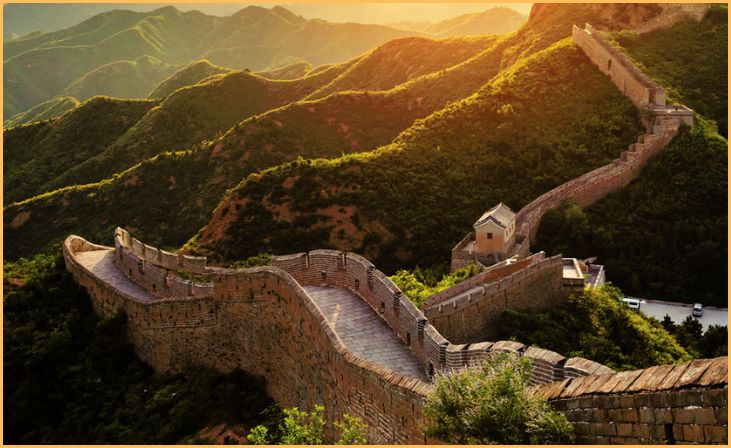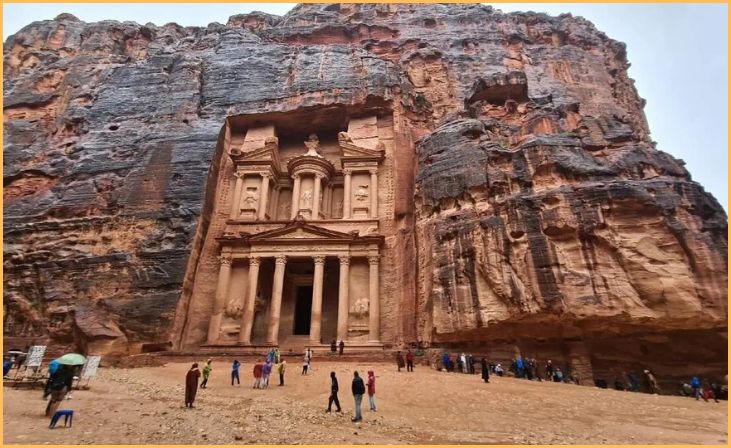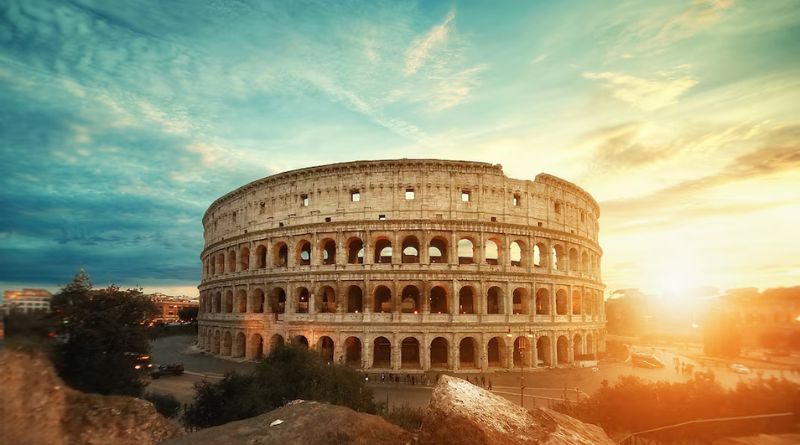World Greatest 10 Monuments – Monuments stand as timeless witnesses to human achievement, embodying cultural, historical, and architectural prowess. In this exploration, we unveil the world’s greatest 10 monuments — iconic structures that transcend time and captivate the imagination. From the storied Great Wall of China, weaving through centuries of history, to the eternal grace of the Taj Mahal in India, each monument unfolds a unique narrative.
The Pyramids of Giza echo the mysteries of ancient Egypt, while Machu Picchu’s mountaintop allure whispers secrets of the Inca civilization. Join us on a global journey that spans the symbolism of the Statue of Liberty, the elegance of the Eiffel Tower, the rock-carved wonders of Petra, the grandeur of the Colosseum, and the artistic triumph of the Sydney Opera House. These monuments are not just structures; they are testaments to humanity’s creativity, resilience, and capacity for enduring legacy.
World Greatest 10 Monuments
Great Wall of China (China)

The Great Wall of China, an ancient marvel, spans over 13,000 miles across northern China. Built over centuries, it served as a formidable defense against invasions, showcasing remarkable engineering and strategic planning.
Comprising walls, watchtowers, and natural barriers, it reflects the historical significance of Chinese dynasties. Recognized as one of the New Seven Wonders of the World, the Great Wall stands as a testament to human ingenuity, offering breathtaking views of the surrounding landscapes.
It remains a symbol of China’s rich cultural heritage and attracts millions of visitors annually, contributing to its status as an iconic global landmark.
Also, Read – Wonders of the Ancient World
Taj Mahal (India)
The Taj Mahal, a sublime testament to love, is an iconic white marble mausoleum in Agra, India. Commissioned by Emperor Shah Jahan in the 17th century in memory of his beloved wife Mumtaz Mahal, it is celebrated for its exquisite Mughal architecture.
The symmetrical masterpiece features intricate carvings, a stunning dome, and lush gardens. Recognized as a UNESCO World Heritage Site, the Taj Mahal attracts millions of visitors from around the globe, enraptured by its timeless beauty and poignant romantic history. As a symbol of eternal love, it stands as one of the most cherished and photographed monuments in the world.
Machu Picchu (Peru)
Machu Picchu, perched high in the Andes Mountains of Peru, is a breathtaking Incan citadel and UNESCO World Heritage Site. Built in the 15th century and later abandoned, it remained hidden until its rediscovery in 1911.
This archaeological marvel boasts stunning terraces, temples, and stone structures against a backdrop of lush green mountains. The intricate stonework, including the Intihuatana stone, reflects the advanced engineering of the Inca civilization.
Majestic and mysterious, Machu Picchu is not only a testament to ancient Incan ingenuity but also a symbol of Peru’s rich cultural heritage, drawing adventurers and history enthusiasts from around the world.
Pyramids of Giza (Egypt)
The Pyramids of Giza, an awe-inspiring ancient wonder, stand proudly on the outskirts of Cairo, Egypt. Comprising the Great Pyramid of Khufu, Pyramid of Khafre, and Pyramid of Menkaure, these colossal structures are marvels of Egyptian engineering dating back to around 2580–2560 BCE.
The Great Pyramid, one of the Seven Wonders of the Ancient World, captivates with its precision and scale. These tombs, surrounded by the enigmatic Sphinx, reflect the architectural prowess and religious significance of the ancient Egyptians.
Enduring symbols of power and eternity, the Pyramids of Giza continue to mystify and attract millions of visitors seeking to unlock the secrets of the past.
Eiffel Tower (France)

The Eiffel Tower, an iconic symbol of Paris and France, graces the Champ de Mars with its iron lattice elegance. Completed in 1889 as the entrance arch for the 1889 World’s Fair, it stands at 324 meters tall and was once considered controversial for its avant-garde design.
Today, it is celebrated as a masterpiece of engineering and a cultural landmark. The tower’s three levels offer panoramic views of the City of Lights, and its nightly light displays enchant millions.
A symbol of romance and artistic ingenuity, the Eiffel Tower is a testament to France’s architectural legacy and a must-visit destination for global travelers.
Statue of Liberty (United States)
The Statue of Liberty, a towering symbol of freedom and democracy, graces New York Harbor. A gift from France to the United States, this colossal neoclassical statue was dedicated in 1886.
Designed by Frédéric Auguste Bartholdi and built by Gustave Eiffel, it stands at 305 feet, welcoming visitors and immigrants with its torch of enlightenment and tablet inscribed with the date of the Declaration of Independence.
As an enduring emblem of liberty and hope, the Statue of Liberty has become an integral part of American identity and a beacon for those seeking a new life in the land of opportunity.
Also, Read – Cities With The Cleanest Water In The World
Colosseum (Italy)
The Colosseum, an ancient Roman amphitheater, stands as a majestic testament to architectural prowess in the heart of Rome, Italy. Completed in 80 AD, this colossal arena hosted gladiatorial contests and public spectacles. Its iconic elliptical design, towering arches, and intricate engineering showcase the grandeur of Roman engineering.
The Colosseum, also known as the Flavian Amphitheatre, could accommodate 50,000 spectators and was a hub of entertainment in ancient times. Despite centuries of natural disasters and human activities, it remains an enduring symbol of Rome’s rich history and cultural significance, drawing millions of visitors to marvel at its imposing structure and historical legacy.
Angkor Wat (Cambodia)
Angkor Wat, a UNESCO World Heritage Site in Cambodia, stands as the world’s largest religious monument. Built in the 12th century by King Suryavarman II, this architectural masterpiece represents the pinnacle of Khmer civilization.
The temple complex covers 162.6 hectares and features intricate bas-reliefs, towering spires, and a moat, reflecting both Hindu and Buddhist influences. Its central towers symbolize Mount Meru, the cosmic center of the universe in Hindu mythology.
Angkor Wat’s grandeur and spiritual significance make it a cultural jewel, drawing admiration for its beauty and historical importance. As a symbol of Cambodia, it remains a source of pride and wonder for visitors worldwide.
Sydney Opera House (Australia)
The Sydney Opera House, an iconic architectural gem, graces the harbor of Sydney, Australia. Designed by Jørn Utzon and opened in 1973, its distinctive sail-like shells make it a symbol of modern creativity. A UNESCO World Heritage Site, the Opera House hosts a variety of artistic performances against the stunning backdrop of the harbor.
Its innovative design and cultural significance reflect Australia’s dynamic spirit. Welcoming millions of visitors annually, the Sydney Opera House is not only a world-renowned venue for the arts but also an enduring symbol of Sydney and Australia’s commitment to innovation, culture, and the celebration of human creativity.
Petra (Jordan)

Petra, the “Rose City” of Jordan, is a UNESCO World Heritage Site and an archaeological wonder nestled between rugged desert canyons. Carved into rose-red cliffs by the Nabataeans around 312 BCE, this ancient city boasts intricate rock-cut architecture, including the iconic Al-Khazneh (the Treasury) and the Monastery.
Connected by a network of narrow canyons, or Siq, Petra reveals a blend of Hellenistic, Roman, and Arabian influences. Abandoned and forgotten for centuries, it was rediscovered in 1812, captivating explorers and enthusiasts alike.
Petra’s enigmatic beauty and historical significance make it a cultural treasure, drawing visitors to marvel at its unique blend of natural and man-made wonders.
Conclusion
In the tapestry of human history, these monuments stand as living testimonials to our shared heritage. As we marvel at the Great Wall, the Taj Mahal, and others, we glimpse the past and present converging in architectural splendor. These monuments are not merely structures but chapters etched in the collective memory of humanity.
Preserving their grandeur ensures that future generations continue to draw inspiration from these cultural treasures. As we conclude this journey, let us cherish and protect these monuments, acknowledging their role as eternal beacons that connect us to the essence of our global story.
FAQs
The selection criteria include historical significance, architectural marvel, cultural importance, and global recognition. Each monument chosen possesses a unique blend of these attributes.
No, the list does not imply a specific ranking. Each monument holds its own significance, and the order doesn’t denote superiority. The intention is to celebrate the diversity and richness of these cultural treasures.
Each monument’s unique challenges and preservation initiatives were briefly highlighted. These challenges vary, including environmental factors, tourism impact, and the need for ongoing conservation efforts.







